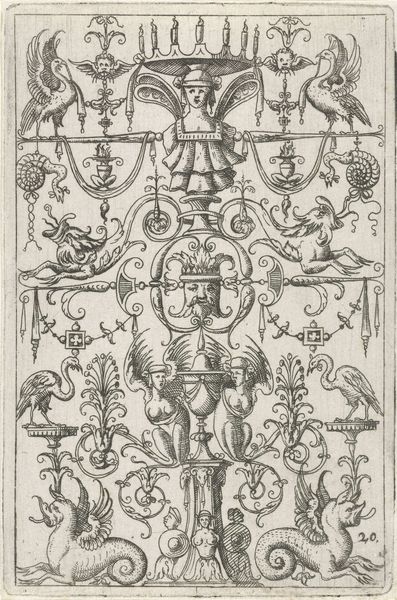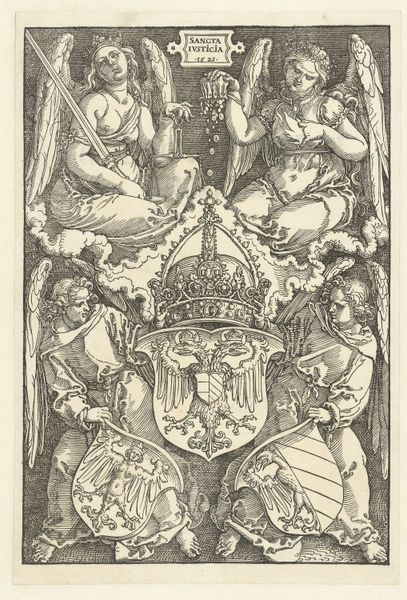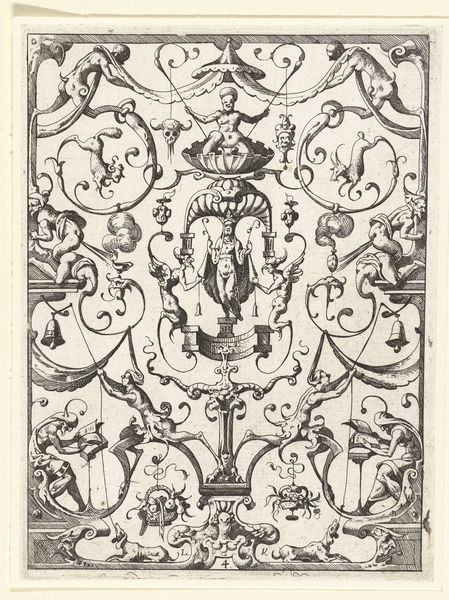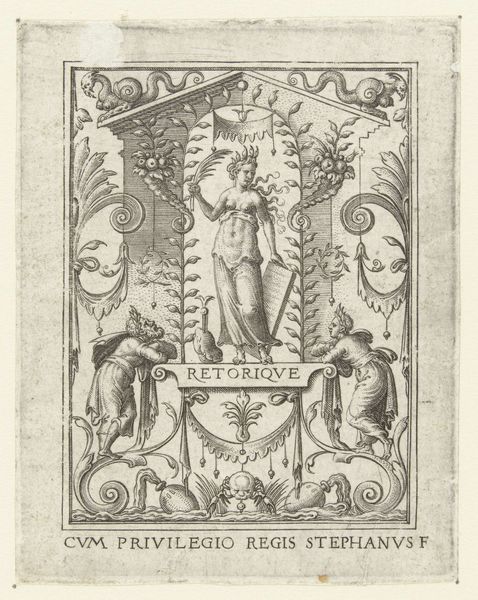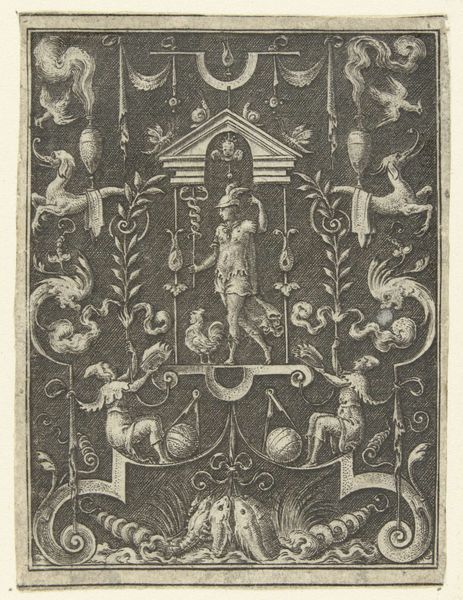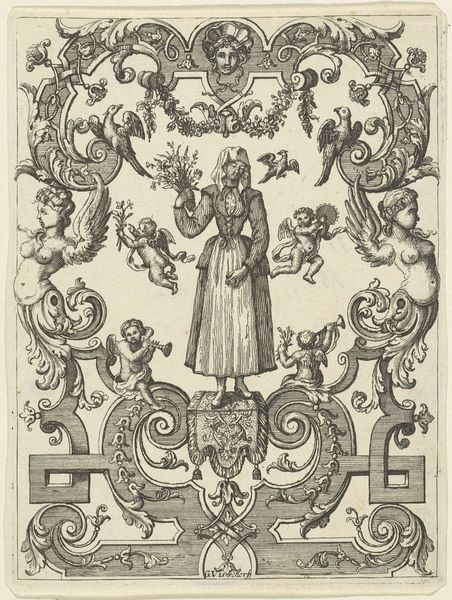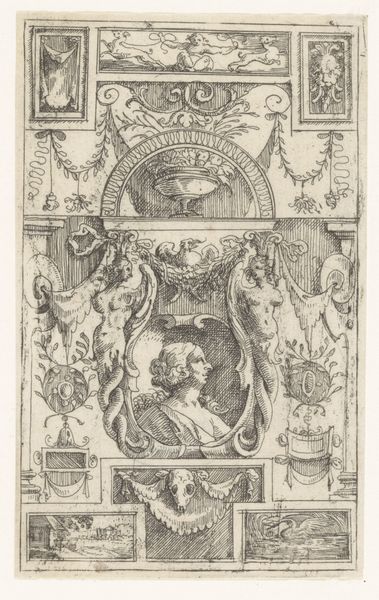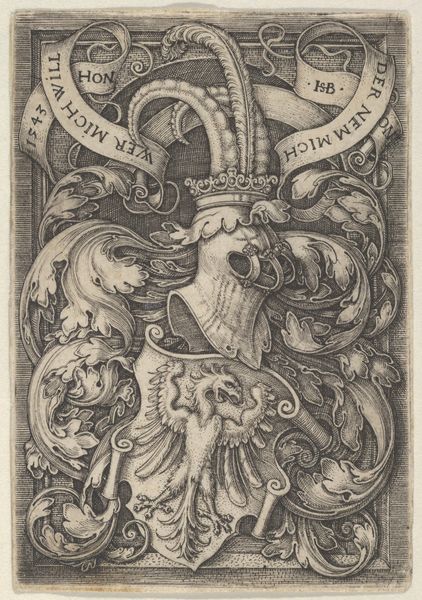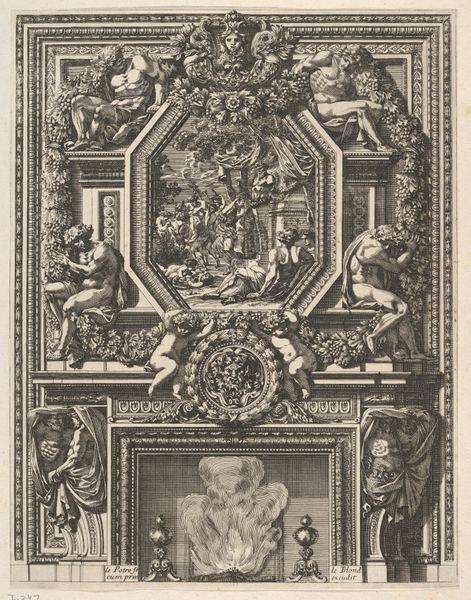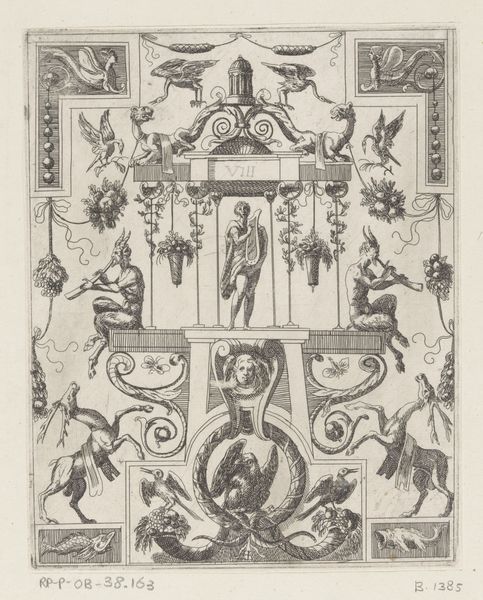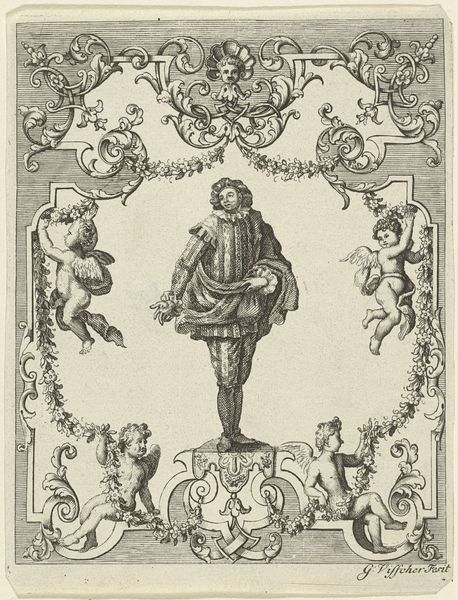
print, metal, engraving
#
portrait
#
self-portrait
#
pen drawing
# print
#
metal
#
pen illustration
#
old engraving style
#
german-expressionism
#
ink line art
#
11_renaissance
#
line
#
symbolism
#
engraving
Copyright: National Gallery of Art: CC0 1.0
Curator: This print presents the "Coat of Arms of Lazarus Spengler," created by Sebald Beham, likely during the Renaissance. Look at how meticulously the artist rendered every detail in this metal engraving. Editor: The engraving feels somber. The dense hatching creates a stark contrast that amplifies the ominous feeling. Is that a skull at the bottom? Curator: Precisely. Notice how the skull, positioned beneath the heraldic shield and motto, introduces the vanitas motif—a reflection on mortality. This directs us to the theme of human destiny. Also, observe the overall design of this work as a successful superimposition of Renaissance design principles onto older German art. Editor: That text in Latin certainly amplifies that motif, doesn't it? "Ultimus ad morte post omnia fata recursus"—"The last recourse of all destinies is death." In its original context, it's speaking to issues like plague, constant warfare, and religious persecution rampant in Europe at the time. This was a deeply turbulent historical period. Does Spengler’s coat of arms and personal motto somehow address those anxieties? Curator: You are spot on. The design is wonderfully balanced, vertically symmetrical with variations only in its minute surface details. Consider also the contrasting textures Beham masterfully evokes: the smooth polished helmet, against the organic leafy elements and coarse skull. It brings the eye around and through the form in a complete circuit. Editor: Knowing Beham's background as one of the Nuremberg "godless painters," expelled for their radical beliefs, adds another layer. Perhaps Spengler, a prominent figure in Nuremberg, shared some of those reformist sympathies? Is it also fair to read something critical into this celebration of Spengler? It's intriguing how art can embody dissent even while seeming to adhere to tradition. Curator: Yes, and structurally speaking, we could unpack the semiotic function of the fleur-de-lis symbol on the shield as opposed to its more traditional uses. But you’ve proposed an intriguing read here... Editor: For me, looking at this through an activist lens invites conversations about historical trauma and the individual's struggle for meaning within systems of power. It highlights the intersection of personal identity, political context, and artistic expression. Curator: I concur! Beham's superb compositional choices grant insight into the period while showcasing this magnificent artistry. Editor: Absolutely! And through such critical dialogues, it allows us to discover hidden stories of individuals pushing the boundaries of societal norms in uncertain times.
Comments
No comments
Be the first to comment and join the conversation on the ultimate creative platform.
